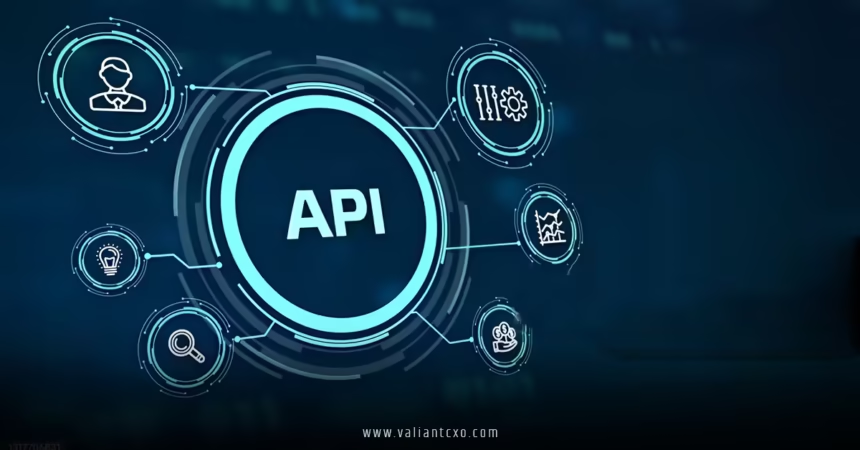How Banking APIs Are Driving Open Finance in the US is a game-changer you might not even realize is happening right under your nose. Imagine your bank account chatting seamlessly with your budgeting app, your investment platform pulling real-time data without you lifting a finger— that’s the magic unfolding today. As someone who’s dived deep into fintech trends, I can tell you this isn’t just tech jargon; it’s reshaping how we handle money in America. Let’s break it down step by step, shall we?
What Exactly Are Banking APIs?
Picture banking APIs as the secret sauce in a gourmet burger—they hold everything together without stealing the show. At their core, these Application Programming Interfaces are like digital bridges, letting different software systems talk to each other. Banks use them to share data securely with third-party apps, all with your permission, of course.
Why does this matter? Well, think about the old days when you’d manually enter your transaction details into a spreadsheet. Tedious, right? Now, APIs automate that flow, pulling info like account balances or payment histories in seconds. In the US, giants like Citi and Capital One have rolled out developer hubs where fintech folks can plug in and innovate. For instance, Citi’s APIs help apps like QuickBooks verify accounts instantly, saving everyone time and hassle.
But here’s where it gets exciting: these APIs aren’t just internal tools anymore. They’re opening doors to a broader ecosystem, fueling what we call open finance. And yes, How Banking APIs Are Driving Open Finance in the US starts right here, with these foundational tech pieces making data accessible and actionable.
The Rise of Open Finance: A US Perspective
Open finance? It sounds fancy, but it’s basically the idea that your financial data shouldn’t be locked in a vault at one bank. Instead, it flows freely (and safely) to services that can help you manage, invest, or even lend money better. In Europe, regulations like PSD2 mandated this sharing, but in the US, it’s more of a market-driven evolution—think Wild West meets Silicon Valley.
We’ve seen a surge since the early 2020s, with consumers linking accounts to apps at record rates. A survey showed 87% of Americans are already doing this, whether they know it or not. It’s no wonder; who wouldn’t want personalized loan offers or automated savings tips? Companies like Plaid and MX are at the forefront, acting as middlemen to connect banks with thousands of apps.
Regulations are catching up, though. The Consumer Financial Protection Bureau (CFPB) finalized a rule in 2024 under Section 1033 of the Dodd-Frank Act, requiring banks to share data upon request. This isn’t just bureaucracy—it’s a push toward competition, where smaller fintechs can challenge big banks. But with potential revisions looming in 2025, the landscape is dynamic, keeping everyone on their toes.
How Banking APIs Are Driving Open Finance in the US Through Secure Data Sharing
Let’s zoom in on the heart of it: How Banking APIs Are Driving Open Finance in the US by enabling secure, consent-based data sharing. APIs use standards like those from the Financial Data Exchange (FDX), ensuring data moves without exposing sensitive info. It’s like handing over a key to a safe deposit box, not the whole bank.
Take account aggregation, for example. Apps like Mint use APIs to pull data from multiple banks, giving you a holistic view of your finances. No more logging into five different portals—it’s all in one place. This boosts financial literacy; suddenly, you’re spotting spending patterns you never noticed.
Security? Oh, it’s top-notch. Modern APIs employ OAuth tokens—think of them as temporary passes that expire, reducing hack risks. Gone are the days of “screen scraping,” where apps mimicked logins; now, it’s direct, encrypted connections. In fact, this shift has cut fraud incidents significantly, making open finance not just innovative but trustworthy.
Benefits for Consumers: Why You Should Care About How Banking APIs Are Driving Open Finance in the US
Hey, you—the everyday American juggling bills and dreams— this is for you. How Banking APIs Are Driving Open Finance in the US means more control over your money. Ever wondered why your budgeting app suggests cutting coffee runs? It’s APIs feeding it real-time transaction data, helping you save without the guesswork.
Personalization is another win. Imagine getting loan rates tailored to your exact spending habits, not some generic score. Or robo-advisors tweaking investments on the fly. For underserved folks, like those without traditional credit, APIs open doors to alternative lending based on bank data, not just FICO scores.
And let’s talk inclusion. Open finance bridges gaps for immigrants or gig workers, whose finances don’t fit neat boxes. By sharing data securely, APIs help build credit profiles from everyday transactions. It’s empowering, isn’t it? You’re not just a customer; you’re in the driver’s seat.
How Businesses and Fintechs Benefit from Banking APIs in Open Finance
Flip the coin, and businesses are grinning ear to ear. How Banking APIs Are Driving Open Finance in the US lets companies innovate like never before. Fintech startups, once outsiders, now partner with banks via APIs to offer embedded finance—think buying insurance right in your shopping app.
For banks, it’s a revenue booster. They charge for API access or gain insights from aggregated data (anonymized, of course). Small businesses get cash flow tools that predict dips, avoiding overdrafts. Fraud detection amps up too; APIs spot anomalies across accounts faster than a hawk eyeing prey.
Examples abound: Stripe uses APIs for seamless payments, while Plaid connects over 12,000 institutions. It’s a symbiotic relationship—banks get tech savvy, fintechs get data, and everyone wins.
Challenges and Hurdles in Implementing Banking APIs for Open Finance
But let’s not sugarcoat it; the road isn’t all smooth. How Banking APIs Are Driving Open Finance in the US faces bumps like legacy systems in old banks—think clunky mainframes clashing with sleek APIs. Integration costs money and time, slowing adoption.
Privacy concerns loom large. With data flying around, one breach could erode trust. That’s why regulations emphasize consent and security, but enforcement varies. Competition heats up too; big banks might drag feet to protect turf, while fintechs push boundaries.
Then there’s standardization. Without uniform APIs, interoperability suffers—like trying to plug a US charger into a European outlet. Groups like FDX are fixing this, but it’s ongoing. Rhetorically, can we afford to lag behind global peers?
Regulatory Landscape: How Policies Shape How Banking APIs Are Driving Open Finance in the US
Regulations are the guardrails here. The CFPB’s 2024 rule mandates data access for products like checking accounts and credit cards, phasing in from 2026. It bans fees for data sharing and boosts privacy, aiming to spark competition.
Other laws like Gramm-Leach-Bliley set security baselines. But with a new administration in 2025 hinting at revisions, uncertainty brews. Still, it’s progress—pushing banks to adopt APIs or risk irrelevance.
Industry bodies approve standards; the CFPB greenlit FDX in 2025 for open banking guidelines. It’s a collaborative effort, blending government oversight with market innovation.
Real-World Examples: Success Stories of Banking APIs in Action
Let’s get concrete. Capital One’s DevExchange lets developers build on their APIs, embedding banking into apps—like opening accounts in a budgeting tool. It’s How Banking APIs Are Driving Open Finance in the US personified.
Plaid’s network powers apps like Venmo, verifying accounts without micro-deposits. MX enhances data for better insights, reducing customer complaints. Even non-banks join; retailers use APIs for instant loans at checkout.
These stories show APIs aren’t abstract—they’re transforming daily finance.
The Future Outlook: Where Is Open Finance Headed?
Peering ahead, How Banking APIs Are Driving Open Finance in the US will accelerate with AI and blockchain. Imagine predictive analytics foreseeing financial needs or decentralized finance blending with traditional banks.
By 2030, fintech revenue could hit $1.5 trillion, APIs at the core. Challenges like cyber threats will evolve, but so will defenses. For you, it means more choices, lower costs, and smarter money management.
How to Get Started with Open Finance as a Consumer or Business
Ready to dip in? Consumers: Check apps like Robinhood or Acorns—they use APIs seamlessly. Review your bank’s data-sharing policies; consent is key.
Businesses: Partner with providers like Stripe for API integration. Invest in security; it’s non-negotiable. Start small, scale up— the rewards are huge.
In wrapping up, How Banking APIs Are Driving Open Finance in the US is revolutionizing our financial world, from empowering consumers with data control to sparking business innovation through secure sharing. We’ve covered the basics, benefits, challenges, and future— all pointing to a more inclusive, efficient system. Don’t sit on the sidelines; explore these tools today and take charge of your finances. The future is open, and it’s calling your name.
FAQs
1. What role do regulations play in How Banking APIs Are Driving Open Finance in the US?
Regulations like the CFPB’s 2024 rule ensure safe data sharing, boosting competition and privacy. They mandate banks provide access without fees, shaping a trustworthy ecosystem.
2. How can consumers benefit directly from How Banking APIs Are Driving Open Finance in the US?
Consumers gain personalized services, like tailored loans or aggregated accounts, making money management easier and more inclusive for everyone.
3. What are some challenges associated with How Banking APIs Are Driving Open Finance in the US?
Key challenges include data security risks, lack of standardization, and integration hurdles for older banks, but ongoing standards like FDX are addressing them.
4. Can you give examples of companies involved in How Banking APIs Are Driving Open Finance in the US?
Companies like Plaid and Stripe lead by connecting banks to apps, enabling seamless payments and data access for innovative financial services.
5. What’s the future impact of How Banking APIs Are Driving Open Finance in the US on fintech?
It promises explosive growth, with AI-enhanced tools and broader data access leading to smarter, more competitive financial products by 2030.
For More Updates !! : valiantcxo.com


